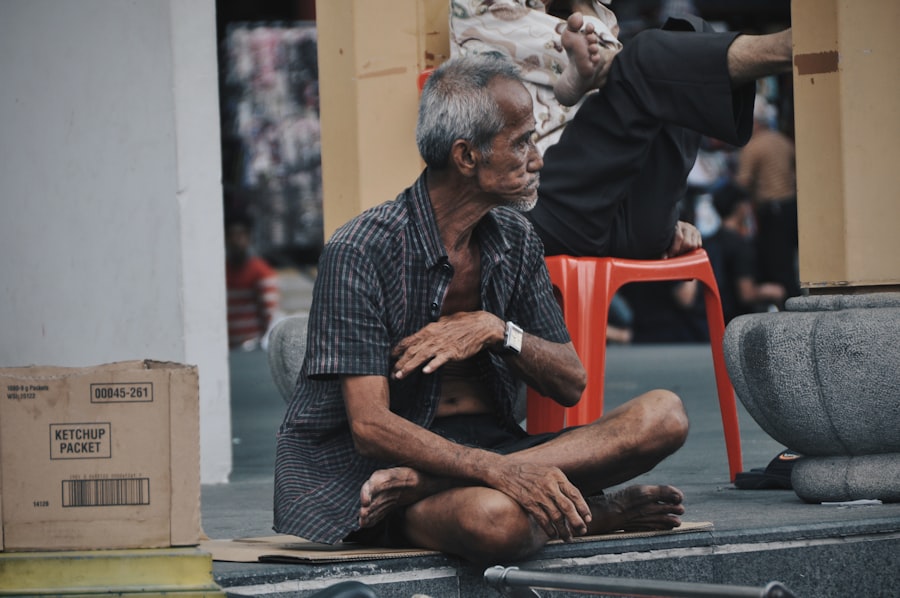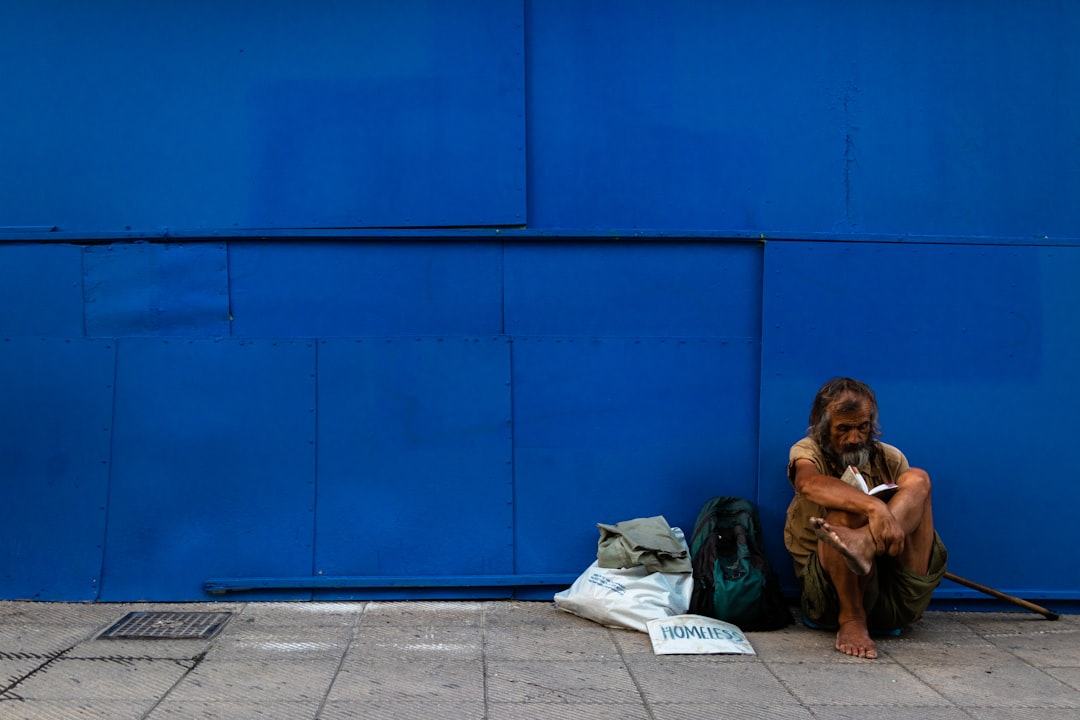The cost of rent in New York City has reached staggering heights, making it one of the most expensive places to live in the United States. As of late 2023, the average rent for a one-bedroom apartment in Manhattan hovers around $3,500, while other boroughs are not far behind. This relentless increase in rental prices has created a significant burden for many residents, particularly those with lower and middle incomes.
The demand for housing continues to outstrip supply, leading to bidding wars and skyrocketing prices that leave many potential renters feeling hopeless. The rising cost of rent is not merely a statistic; it represents a profound shift in the fabric of New York City. Long-time residents are being pushed out of neighborhoods they have called home for decades, while newcomers often find themselves grappling with the harsh realities of a competitive rental market.
The situation is exacerbated by the influx of wealthier individuals and families moving into the city, further driving up demand and prices. As a result, the dream of living in New York City is becoming increasingly unattainable for many.
Key Takeaways
- The rising cost of rent in New York City is making it increasingly difficult for residents to afford housing.
- The pandemic has further exacerbated the rental prices in NYC, making it even more challenging for renters to find affordable housing.
- The struggle for affordable housing in NYC has led to displacement and gentrification in many neighborhoods.
- Landlords and real estate developers play a significant role in the rent crisis, often prioritizing profits over the well-being of renters.
- Government policies and initiatives are being implemented to address the rent crisis, but more action is needed to make a meaningful impact.
The Impact of the Pandemic on Rental Prices
The COVID-19 pandemic brought unprecedented changes to the rental market in New York City. Initially, as people fled the city in search of more space and less density, rental prices saw a temporary decline. Landlords were forced to offer concessions such as reduced rents and waived fees to attract tenants during this tumultuous period.
However, as the city began to recover and people returned, the rental market rebounded with a vengeance. By 2023, prices had not only recovered but surged past pre-pandemic levels, leaving many renters in a precarious position. The pandemic also altered the dynamics of what renters sought in their living spaces.
With remote work becoming more common, many individuals prioritized larger apartments or those with outdoor spaces. This shift in demand led to a rapid increase in prices for certain types of properties, particularly those that offered amenities catering to a work-from-home lifestyle. Consequently, the pandemic’s impact on rental prices has been both immediate and long-lasting, reshaping the landscape of New York City’s housing market.
The Struggle for Affordable Housing in NYC

The quest for affordable housing in New York City is an ongoing struggle that has persisted for decades. As rents continue to rise, many residents find themselves spending an unsustainable portion of their income on housing. The general rule of thumb suggests that no more than 30% of one’s income should be allocated to rent; however, for many New Yorkers, this is a distant dream.
The lack of affordable housing options has led to increased financial strain and has forced individuals and families to make difficult choices regarding their living situations. Moreover, the shortage of affordable housing is not just a matter of economics; it also has profound social implications. Communities that once thrived on diversity and inclusivity are increasingly homogenized as lower-income residents are pushed out.
The struggle for affordable housing is not merely about finding a place to live; it is about preserving the cultural richness that defines New York City. As neighborhoods gentrify and rents soar, the very essence of what makes the city unique is at risk of being lost.
Gentrification and Displacement in New York City
| Borough | Median Household Income | Median Rent | Percentage of Gentrified Neighborhoods |
|---|---|---|---|
| Manhattan | 82,459 | 3,667 | 45% |
| Brooklyn | 56,015 | 2,700 | 30% |
| Queens | 64,987 | 2,200 | 20% |
| Bronx | 38,467 | 1,600 | 15% |
| Staten Island | 74,044 | 2,000 | 10% |
Gentrification has become a defining characteristic of many neighborhoods in New York City, often leading to the displacement of long-time residents. As wealthier individuals move into historically lower-income areas, property values rise, and so do rents. This process can transform vibrant communities into enclaves that cater primarily to affluent newcomers, leaving original residents struggling to keep pace with escalating costs.
The displacement caused by gentrification is not just an economic issue; it also erodes community ties and disrupts social networks that have existed for generations. The consequences of gentrification extend beyond individual families; they ripple through entire neighborhoods. Local businesses that once served the community may be forced to close as rents increase or as their customer base shifts.
Cultural landmarks can disappear, replaced by high-end boutiques and chain stores that cater to a different demographic. This transformation can lead to a loss of identity for neighborhoods that have long been characterized by their unique histories and diverse populations.
The Role of Landlords and Real Estate Developers in the Rent Crisis
Landlords and real estate developers play a pivotal role in shaping the rental landscape of New York City. Their decisions regarding property management, development projects, and pricing strategies significantly influence rental prices and availability. In many cases, landlords prioritize profit over tenant welfare, leading to practices that exacerbate the rent crisis.
For instance, some landlords may neglect maintenance or attempt to push out long-term tenants in favor of higher-paying newcomers. Real estate developers often contribute to the problem by focusing on luxury developments rather than affordable housing projects. While new construction can help alleviate some pressure on the housing market, it frequently caters to wealthier individuals rather than addressing the needs of low- and middle-income families.
This focus on high-end developments can create an imbalance in the market, further driving up rents and limiting options for those who need affordable housing the most.
Government Policies and Initiatives to Address the Rent Crisis

In response to the growing rent crisis, various government policies and initiatives have been proposed and implemented over the years. Rent stabilization laws aim to protect tenants from exorbitant rent increases while providing some level of security for those living in regulated units. However, these laws have faced criticism for being insufficient in addressing the broader issues within the housing market.
Additionally, initiatives aimed at increasing affordable housing stock have been introduced at both state and local levels. Programs designed to incentivize developers to include affordable units in new projects or to rehabilitate existing buildings for low-income residents are steps toward addressing the crisis. However, critics argue that these measures often fall short of meeting the overwhelming demand for affordable housing in a city where the need far exceeds supply.
The Experiences of Renters in NYC
The experiences of renters in New York City vary widely based on factors such as income level, neighborhood, and personal circumstances. For many, renting is fraught with anxiety and uncertainty as they navigate a competitive market filled with challenges. Stories abound of individuals who have faced eviction threats or who have had to move multiple times due to rising rents or landlord disputes.
These experiences highlight the precarious nature of renting in a city where stability often feels elusive. Moreover, renters often find themselves at the mercy of landlords who may not prioritize their needs or concerns. Issues such as delayed repairs or lack of communication can create additional stress for tenants already grappling with financial pressures.
The emotional toll of living in such an environment can be significant, leading to feelings of frustration and helplessness among those who simply seek a safe and affordable place to call home.
The Effects of the Rent Crisis on Communities and Neighborhoods
The rent crisis in New York City has far-reaching effects on communities and neighborhoods beyond individual renters’ experiences. As rents rise and displacement occurs, neighborhoods can lose their character and diversity. Long-standing community organizations may struggle to survive as their constituents are forced out, leading to a decline in local engagement and support networks.
This shift can lead to tensions between newcomers and long-time residents, further complicating community dynamics. Ultimately, the rent crisis threatens not only individual livelihoods but also the very essence of what makes New York City a vibrant and diverse metropolis.
Advocacy and Activism for Renters’ Rights in NYC
In response to the challenges posed by rising rents and housing insecurity, advocacy and activism for renters’ rights have gained momentum in New York City. Grassroots organizations work tirelessly to raise awareness about housing issues and push for policy changes that prioritize tenant protections. These groups often mobilize communities through campaigns aimed at educating renters about their rights and providing resources for those facing eviction or harassment.
Activism has also taken various forms, from protests demanding affordable housing solutions to lobbying efforts aimed at influencing local government policies. Renters’ rights advocates emphasize the importance of collective action in addressing systemic issues within the housing market. By uniting voices from diverse backgrounds, these movements seek to create lasting change that benefits all residents rather than just a privileged few.
The Future of Renting in New York City
The future of renting in New York City remains uncertain as various factors continue to shape the housing landscape. While there are ongoing efforts to address affordability and tenant protections, significant challenges persist. The demand for housing shows no signs of abating, particularly as more people flock to urban centers post-pandemic.
Without substantial changes in policy or market dynamics, it is likely that rental prices will continue their upward trajectory. However, there is also hope for positive change as awareness grows around housing issues and advocacy efforts gain traction. Community-driven initiatives aimed at creating more equitable housing solutions could pave the way for a more inclusive future where all residents have access to safe and affordable homes.
The path forward will require collaboration among tenants, policymakers, developers, and advocates committed to addressing the complex challenges facing renters in New York City.
Resources and Support for Renters Facing Housing Insecurity
For renters facing housing insecurity in New York City, numerous resources are available to provide support and assistance. Organizations such as Legal Aid Society offer legal representation for tenants dealing with eviction proceedings or landlord disputes. Additionally, various nonprofit groups provide financial assistance programs aimed at helping individuals cover rent or utility costs during difficult times.
Workshops on budgeting or navigating rental agreements can empower renters with knowledge that helps them make informed decisions about their living situations. By connecting with these resources, renters can find support during challenging times while advocating for their rights within an increasingly complex housing landscape.
In conclusion, while the challenges posed by rising rents and housing insecurity are significant, there remains hope for change through advocacy efforts and community support systems dedicated to ensuring that all New Yorkers have access to safe and affordable housing options.
The NYC rent crisis has been a growing concern for residents, with many struggling to keep up with the rising costs of living in the city. A related article that delves into the intricacies of this issue can be found on MyGeoQuest. This article provides an in-depth analysis of the factors contributing to the rent crisis and explores potential solutions to alleviate the burden on tenants. For more information, you can read the full article by visiting MyGeoQuest.
WATCH THIS! The Real Cost of NYC Living: Your Wallet, Sanity, and Subway Survival Skills
FAQs
What is the current rent crisis in NYC?
The current rent crisis in NYC refers to the increasing unaffordability of rental housing in the city, leading to a growing number of residents struggling to find and maintain affordable housing.
What are the main factors contributing to the rent crisis in NYC?
The main factors contributing to the rent crisis in NYC include a shortage of affordable housing, rising property values, gentrification, and stagnant wages.
How has the COVID-19 pandemic impacted the rent crisis in NYC?
The COVID-19 pandemic has exacerbated the rent crisis in NYC by causing job losses, income reductions, and financial instability for many residents, making it even more difficult to afford housing.
What are some potential solutions to the rent crisis in NYC?
Potential solutions to the rent crisis in NYC include increasing the supply of affordable housing, implementing rent control or stabilization measures, and providing financial assistance to low-income residents.
What are the consequences of the rent crisis in NYC?
The consequences of the rent crisis in NYC include displacement of long-term residents, increased homelessness, and a widening wealth gap between low-income and high-income residents.
